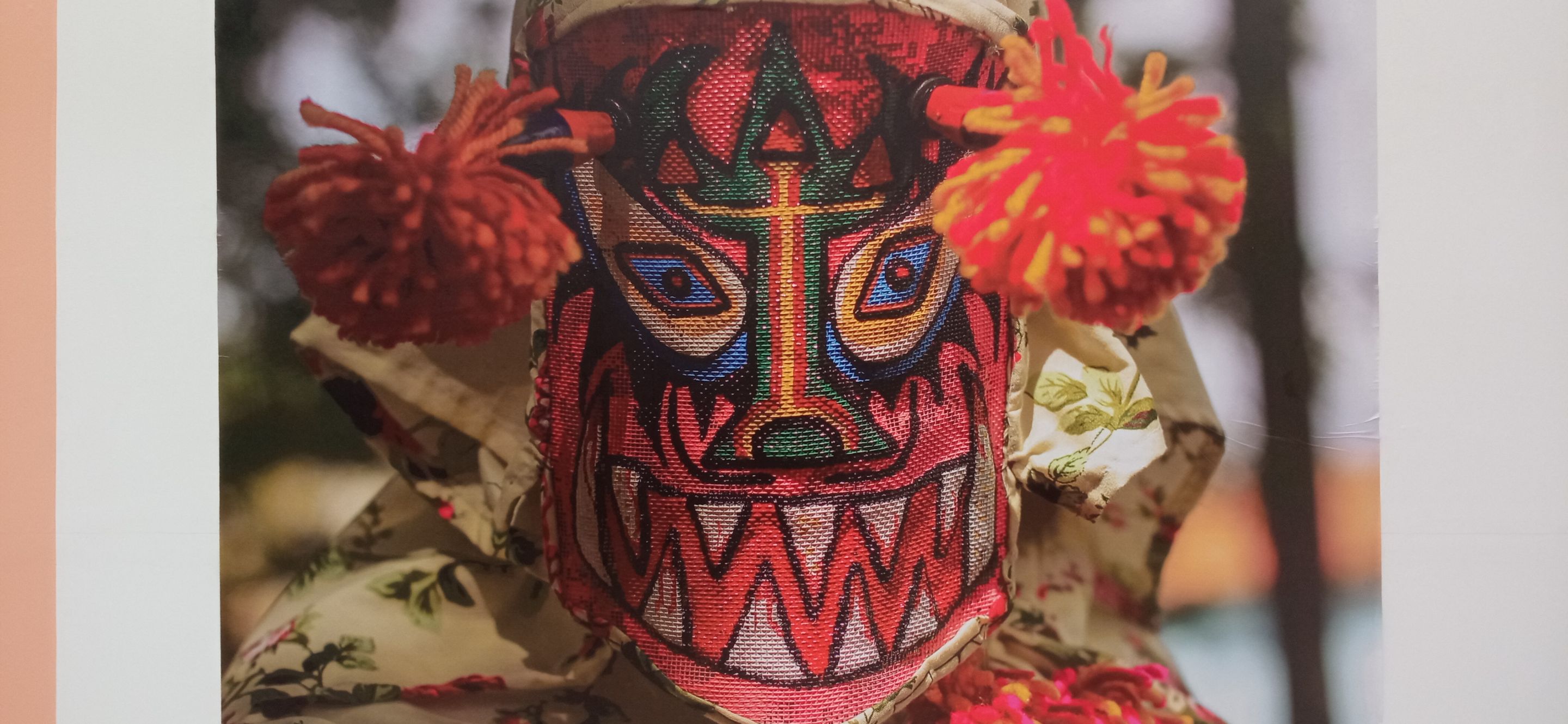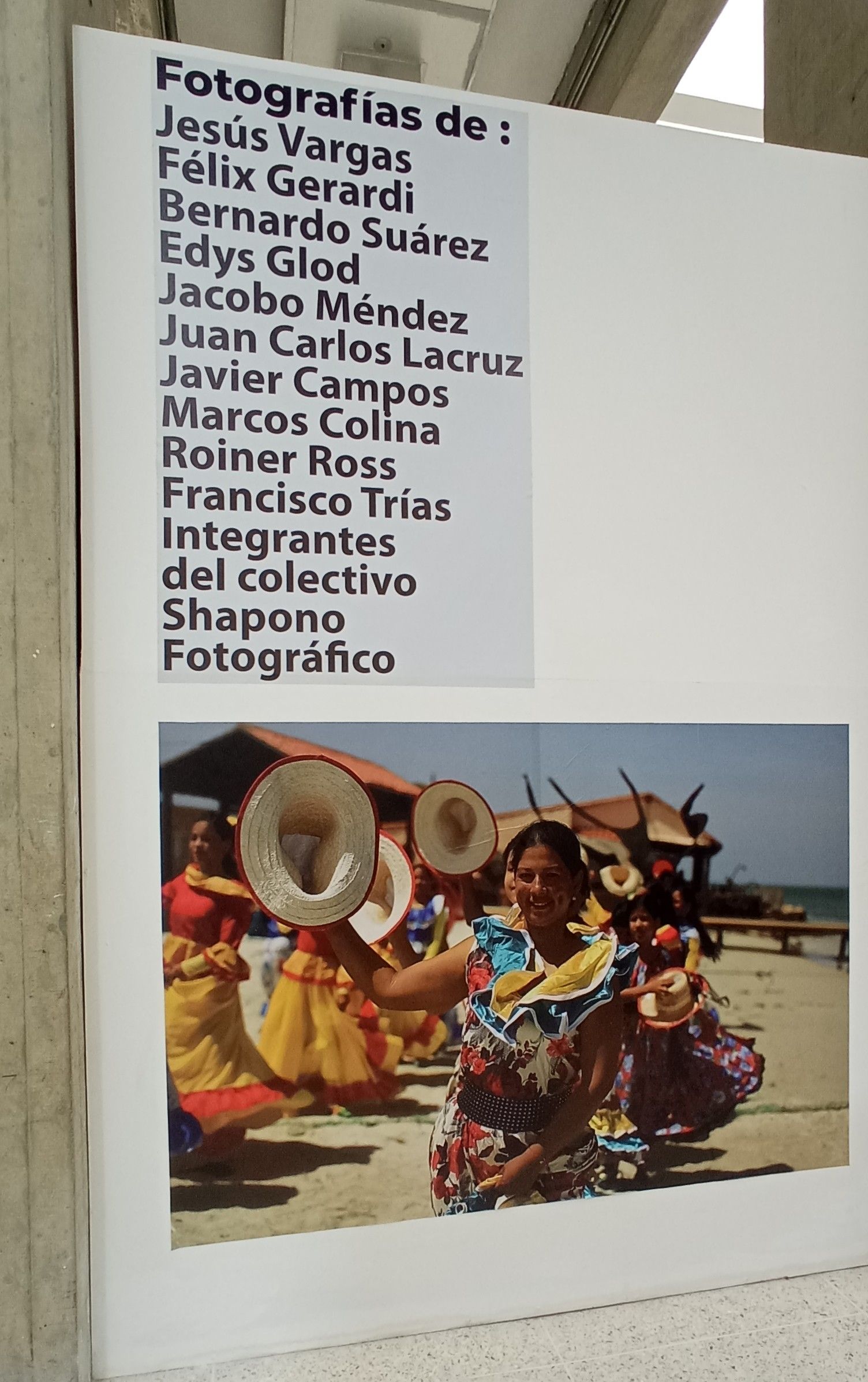CONTENIDO EN ESPAÑOL
¡Hola a todos los integrantes de esta comunidad! En el segundo piso de la Galería de Arte Nacional (Caracas-Venezuela), se encuentra expuesta Viva Venezuela, en donde se busca realzar la música, el canto, la danza, así como los demás ritmos tradicionales que hay en nuestra tierra. Esta, es sólo una pequeña muestra del patrimonio cultural que Venezuela tiene para ofrecer.
Una vez que llegas a la primera sala, eres recibido por una pared decorada con muchos sombreros, en dónde puede leerse el nombre de la exposición. Estuve por años viviendo en una ciudad llanera y era común ver a hombres utilizando sombreros como esos, en busca de protegerse de los intensos rayos del sol. Yo no llegué a tener un sombrero de ese tamaño, pero si le compré a mi amiga que fabricaba pequeños sombreros de adorno, uno que luego volví un pequeño ganchito. Es un buen recuerdo de aquella época 😌
Volviendo a la exposición, no sólo veremos fotografías relacionadas a la danza, bailes y fiestas tradicionales, sino también como algunos instrumentos musicales y hasta algunas máscaras que se utilizan en algunas danzas. Me encantaron las fotografías, ya que al contemplarlas detenidamente, podías sentirte por un momento como si estuvieras allí, sin mencionar que habían tomas muy buenas en donde el fotógrafo, hizo un trabajo excelente al capturar una escena muy llamativa. Hasta me provocó dibujar algunas de ellas 😌
Recordando de nuevo mi época viviendo en la ciudad llanera, tuve la oportunidad no sólo de asistir a bazares en dónde podían apreciarse algunas artesanías sino también de compartir con varios artesanos. Cuando puedes ver el proceso de fabricación de las cosas, aprendes a apreciarlas, más allá de su forma externa. Cada objeto en esas salas, tiene una historia, nos habla de lo que significa para cada habitante de cada región, mantener la cultura y las tradiciones. Ese valor es innegable y entregarlo a las nuevas generaciones es necesario.

En una de las salas, se hallaba retratado a través de fotografías, el proceso de fabricación del casabe y de la arepa ¡Fue muy informativo! Sé hacer arepas, pero no sabía del todo cómo se fabricaba el casabe, sabía que estaba hecho de yuca, pero nunca me había interesado buscar cómo era que hacían ese casabe que venden al mayor. A medida que veía las fotografías, no sólo aprendía, sino que nacía en mí el respeto por la labor de los fabricantes, cuyas familias trabajan diariamente en la fabricación de un alimento que se ha vuelto parte indispensable de algunas mesas venezolanas.

A través de éste tipo de exposiciones, podemos no sólo aprender mucho más del país en donde vivimos, sino que podemos también valorarlo. Lo disfruté bastante. Los invito a aprovechar y visitar exposiciones de éste tipo cuando las hagan en sus países, les aseguro que se sentirán orgullosos de su nacionalidad 😌
Muchas gracias por haber visitado mi publicación. Espero que les haya parecido interesante.
💚 ¡Hasta una próxima oportunidad! 💚
ENGLISH CONTENT
Hello to all members of this community! On the second floor of the National Art Gallery (Caracas, Venezuela), Viva Venezuela is on display. This exhibition seeks to highlight the music, song, dance, and other traditional rhythms of our land. This is just a small sample of the cultural heritage Venezuela has to offer.
Once you reach the first room, you're greeted by a wall decorated with many hats, on which you can read the name of the exhibition. I lived for years in a city on the plains, and it was common to see men wearing hats like these, seeking protection from the intense rays of the sun. I never owned a hat that size, but I did buy one from my friend who made small decorative hats, which I later turned into a small crochet hook. It's a nice memory of that time 😌
Returning to the exhibition, we'll not only see photographs related to dance, traditional dances, and festivals, but also musical instruments and even masks used in some dances. I loved the photographs because, looking at them closely, you could feel for a moment as if you were there. Not to mention the excellent shots where the photographer did an excellent job capturing a very striking scene. I even felt like drawing some of them 😌
Recalling my time living in the plains city, I had the opportunity not only to attend bazaars where I could appreciate some handicrafts, but also to spend time with several artisans. When you can see the manufacturing process, you learn to appreciate them beyond their external form. Each object in these rooms has a story; it speaks to what maintaining culture and traditions means to each inhabitant of each region. This value is undeniable, and passing it on to the next generation is essential.

In one of the rooms, photographs depicted the process of making casabe and arepas. It was very informative! I know how to make arepas, but I didn't fully understand how casabe was made. I knew it was made from yuca, but I had never been interested in finding out how they made the casabe they sell wholesale. As I looked at the photographs, I not only learned, but also grew a respect for the work of the makers, whose families work daily to make a food that has become an indispensable part of some Venezuelan tables.

Through these types of exhibitions, we can not only learn much more about the country we live in, but we can also appreciate it. I really enjoyed it. I encourage you to take advantage of this and visit exhibitions like this when they are held in your countries. I assure you, you'll feel proud of your nationality 😌
Thank you so much for visiting my post. I hope you found it interesting.
💚 See you next time! 💚
 https://linktr.ee/sue_zoe
https://linktr.ee/sue_zoe







